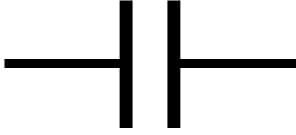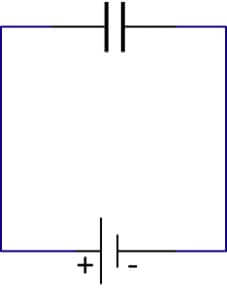Why capacitor blocks DC while allows AC is one of the most popular question in Electrical and Electronics Engineering. But does capacitor actually blocks DC? This post provides to question
Consider a parallel plate capacitor.

Under normal conditions, the plates of capacitors contain a huge number of free electrons.
Let’s consider a DC source that is connected across plates of the capacitor:

The positive terminal of battery pulls the electrons from the left plate towards itself. Electron motion from the left plate causes deficiency of electrons (positive charge) behind. While the same number of electrons are deposited on the right plate of the capacitor. This process will continue until the capacitor reaches full charge (V = E). In this state, the capacitor is said to be charged. Once a capacitor is fully charged no current can pass between dielectric.
In the case of an AC current, the sinusoidal waveform current regularly changes its direction of polarity. During the first quarter of the wave, the capacitor is charged, for next quarter it discharges. For the third and fourth quarter of wave again process repeats.
So that’s how the ac flows through capacitor while dc can’t after completion of cap charging.
